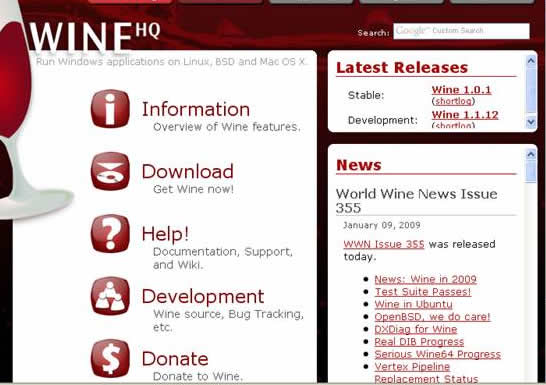





Published on Apr 02, 2024
Wine makes it possible to run Windows programs alongside any Unix-like operating system, particularly Linux. At its heart, Wine is an implementation of the Windows Application Programming Interface (API) library, acting as a bridge between the Windows program and Linux.
Think of Wine as a compatibility layer, when a Windows program tries to perform a function that Linux doesn't normally understand, Wine will translate that program's instruction into one supported by the system. For example, if a program asks the system to create a Windows pushbutton or text-edit field, Wine will convert that instruction into its Linux equivalent in the form of a command to the window manager using the standard X11 protocol.
Wine is often used as a recursive acronym, standing for "Wine Is Not an Emulator". Sometimes it is also known to be used for "Windows Emulator" (An emulator duplicates (provides an emulation of) the functions of one system using a different system, so that the second system behaves like (and appears to be) the first system.). In a way, both meanings are correct, only seen from different perspectives.
The first meaning says that Wine is not a virtual machine, it does not emulate a CPU, and you are not supposed to install Windows nor any Windows device drivers on top of it; rather, Wine is an implementation of the Windows API, and can be used as a library to port Windows applications to UNIX. The second meaning, obviously, is that to Windows binaries (.exe files), Wine does look like Windows, and emulates its behaviour and quirks rather closely.
Throughout the course of its development, Wine has continually grown in the features it carries and the programs it can run. A partial list of these features follows:
• Support for running Win32 (Win 95/98, NT/2000/XP), Win16 (Win 3.1) and DOS programs.
• Optional use of external vendor DLL files (such as those included with Windows).
• X11-based graphics display, allowing remote display to any X terminal, as well as a text mode console.
• Desktop-in-a-box or mixable windows.
• DirectX support for games.
• Modem, serial device support.
• ASPI interface (SCSI) support for scanners, CD writers, and other devices.
• Advanced unicode and foreign language support.
By far the easiest method for installing Wine is to use a prepackaged version of Wine. These packages contain ready-to-run Wine binary files specifically compiled for your distribution, and they are tested regularly by the packagers for both functionality and completeness.

Packages are the recommended method for installing Wine. It is available at the WineHQ downloads page (https://www.winehq.org/site/download), and these are always the latest packages available. Being popular, Wine packages can also be found elsewhere in official distribution repositories. These can, however, sometimes be out of date, depending on the distribution. Packages are easily upgradable as well, and many distributions can upgrade Wine seamlessly with a few clicks. Building our own installable binary package from a source package is also possible.
Sometimes the Wine packages don't fit our needs exactly. Perhaps they're not available for our architecture or distribution, or perhaps we want to build wine using our own compiler optimizations or with some options disabled or perhaps we need to modify a specific part of the source code before compilation. Being an open source project, we are free to do all of these things with Wine's source code, which is provided with every Wine release. This method of installation can be done by downloading a Wine source archive and compiling from the command line.
Getting Wine source archives is simple. Every release, a source package in Compressed tar.bz2 format is provided at the WineHQ downloads page (https://www.winehq.org/site/download). Compiling and installing Wine from source is slightly more difficult than using a package.
If we wish to help develop Wine yourself, we can download the very latest source code from Git repository. Instructions for downloading from the Wine Git repository are available at https://www.winehq.org/site/git (https://www.winehq.org/site/git).
he source code on the Git repository is largely untested and may not even compile properly. It is, however, the best way to test out how Wine will work in the next version, and if we're modifying source code it's best to get the latest copy. The Git repository is also useful for application maintainers interested in testing if an application will still work right for the next release, or if a recent patch actually improves things.
| Are you interested in this topic.Then mail to us immediately to get the full report.
email :- contactv2@gmail.com |